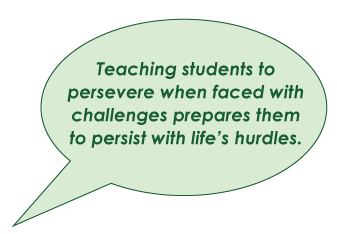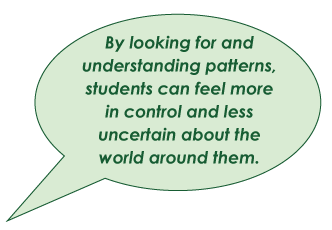The Emerald Education Blog

6 Ways Mathematics Empowers Students in Daily Life
ARTICLE BY DAWNE COKER
Math is often seen as a school subject made up of numbers, equations, and formulas. Yet math is so much more! It is a tool that equips students with skills for navigating the world. Let’s explore six ways math empowers students beyond the classroom.
“Math is often seen as a school subject made up of numbers, equations, and formulas. Yet math is so much more!”
1. Promotes Perseverance
Math presents challenging problems that require persistence. Students must learn to focus on a task. They should try different ways and not give up until they solve it. Making mistakes and learning from them is an important part of this process. Teaching students to persevere and expect challenges can prepare them to persist with life’s hurdles.

2. Cultivates Critical Thinking
Math requires students to think critically and creatively. Students use critical thinking to analyze situations, apply knowledge from past experiences, and arrive at informed decisions. Students will come to appreciate these skills when faced with real-world problems, such as comparing prices at the store, planning a budget, and weighing potential outcomes in challenging situations.
3. Develops Data Literacy
When students make sense of charts, graphs, and other forms of data, they gain the data literacy needed to make sound decisions in all parts of their lives. From online shopping to making sense of survey results, being able to understand data is crucial. Data literacy helps students identify trends, make predictions, and spot misinformation. Further, data science is one of the fastest-growing career fields, with a 35.2% projected employment growth rate from 2022–2032.1
4. Encourages Estimations
Through math, students learn when to be precise and when estimates are useful. This distinction between the need for an exact calculation versus approximation carries over to many areas of life. In Jo Boaler’s book Math-ish, she calls these everyday estimates “ish” numbers. In fact, Boaler suggests “ish” numbers are used more frequently in daily life than exact calculations.2 Estimates are used in many areas of life, such as describing the weather, shopping for food, cooking, ordering materials for a home project, and planning vacations.
5. Gives Structure to the World
Sometimes events in the world can seem completely random. Math helps students find patterns to better understand these events. For example, math can explain why some outcomes happen more often than others. This is true for topics like sports, weather, and even traffic. By looking for and understanding patterns, students can feel more in control of the world around them.

6. Boosts Confidence
Successfully solving problems gives students a sense of accomplishment and boosts their confidence. This confidence encourages students to take on new challenges. It helps them persevere through tough situations. Students are more likely to approach new situations with a positive attitude when they know they have the skills to reason, notice patterns, and think critically.
Conclusion
 Math is not just a school subject; it’s a necessary tool students can use every day. It develops perseverance, critical thinking, and data literacy. Math empowers students to use “ish” thinking, gives structure to the world, and builds confidence.
Math is not just a school subject; it’s a necessary tool students can use every day. It develops perseverance, critical thinking, and data literacy. Math empowers students to use “ish” thinking, gives structure to the world, and builds confidence.
Encouraging a positive attitude towards math, picking appropriate tasks, and giving the right amount of support can help students realize math’s value. Then they can appreciate and use it in daily life. Let’s celebrate the power of math and its ability to empower students, helping them navigate the world with confidence and skill!
Looking Back and Thinking Ahead
As you reflect on ways mathematics empowers students in daily life, consider your own life and role as an educator. Questions you might ask yourself include:
- How does mathematics empower me in my daily life?
- What messages can I intentionally convey to empower my students through math?
- How can I respond when a student asks, Why do we need to learn this?
- What resources or activities can be used to empower students in the math classroom?
1Bureau of Labor Statistics, U.S. Department of Labor, Occupational Outlook Handbook, Data Scientists, at https://www.bls.gov/ooh/math/data-scientists.htm (accessed July 27, 2024).
2Jo Boaler, Math-ish: Finding Creativity, Diversity, and Meaning in Mathematics (HarperOne, 2024).
